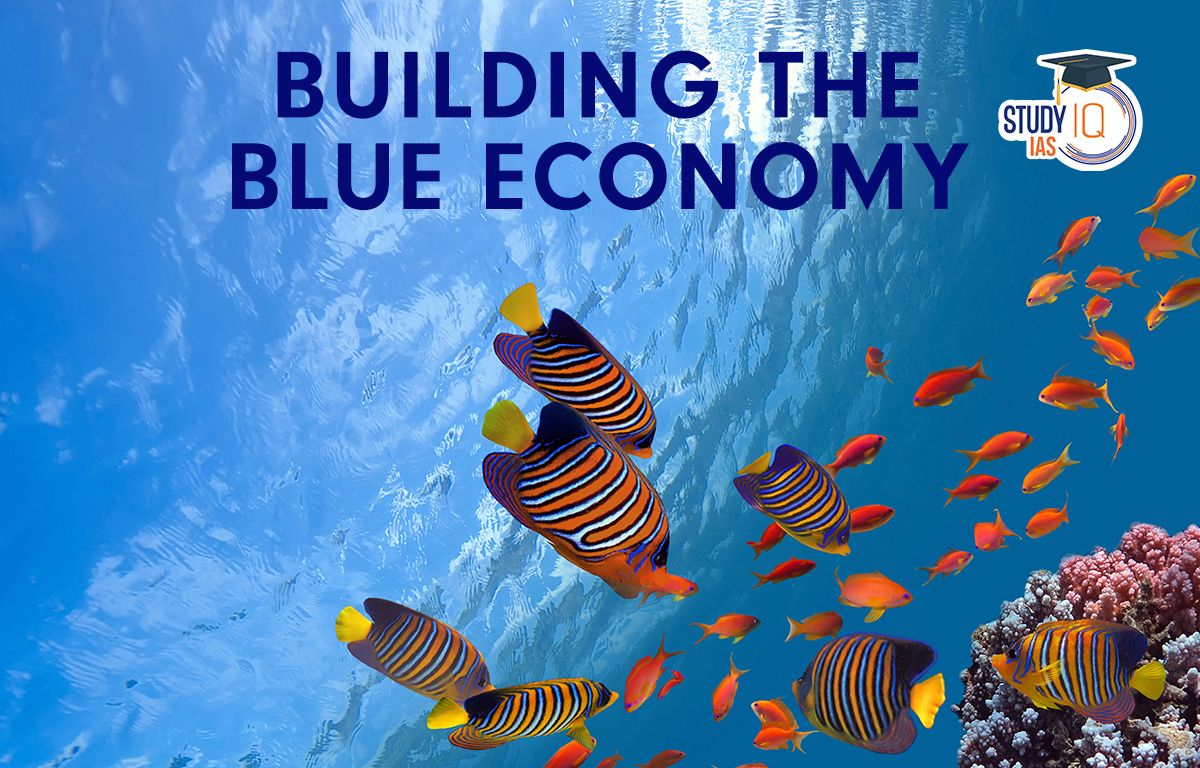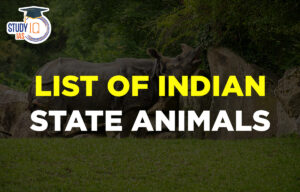Table of Contents
Context: India needs to build modern harbours and deep-water fishing fleet to facilitate its economic and security goals.
Background: Case of China
- As less availability of farmland forced China to become a net importer of food grain, it has mobilised the fishing industry to meet the rising demand for protein in the Chinese diet.
- China is a “fishery superpower”, which owns the world’s largest deep-water fishing (DWF) fleet, with boats that stay at sea for months or even years.
- With an eye on “protein and profit”, China has negotiated contracts to fish in the exclusive economic zones (EEZ) of many other countries in Asia and Africa.
- China also uses a part of its fishing fleet as a “maritime militia”, which assists the navy and coast guard in their tasks.
- Against such backdrop, India too should focus on building and strengthening its blue economy.
What is Blue Economy?
- The World Bank defines “blue economy” as “sustainable use of ocean resources for economic growth, improved livelihoods and jobs, while preserving the health of the ocean ecosystem”.
- 14th SDG Goal: Developing a blue economy is also linked to the 14th Sustainable Development Goal.
- It aims to protect “life below water”, which involves the conservation and sustainable use of the oceans, seas and marine resources for development.
- Activities: Seafood harvesting (fishing and aquaculture), extraction and use of marine non-living resources (minerals and oil and gas), generation of renewable energy (such as offshore wind), and commerce and trade are examples of activities that could count towards a blue economy.

India and Blue Economy
- Facilitate Economic Growth: India is the third largest fish producing country, contributing 8% to the global fish production and ranks second in aquaculture production.
- With 12 major ports and 187 non-major ports, handling about 1,400 million tonnes of cargo, 95% of India’s trade by volume transits by sea.
- India’s Exclusive Economic Zone is rich in living and non-living resources and holds significant recoverable resources of crude oil and of recoverable natural gas.
- Marine Biotechnology and Food Security: Fish, being an affordable and rich source of animal protein, is one of the healthiest options to mitigate hunger and malnutrition in India.
- Fisheries as a Commercial Enterprise: Having commenced as a purely traditional activity, India’s fisheries are being transformed into a commercial enterprise.
- The sector has shown steady growth and has become a major contributor of foreign exchange. India is among the top 5 fish exporting countries in the world.
- Generation of Jobs: Fisheries provide livelihood to about 15 million fishers and fish-farmers at the primary level in India.
- This sector also generates almost twice the number of jobs, along the value-chain — in transportation, cold-storages, and marketing.
- Marine Tourism: Marine tourism is also a sector that has been one of the fastest growing globally and in India. Particularly in coastal states like Kerala, Karnataka, and Tamil Nadu, coastal tourism has contributed largely to both the state economies and livelihood creation.

Challenges in Building India’s Blue Economy
- Lack of Investment: There is lack of investment in India’s deepwater fleet. Indian fishing vessels do not venture into rich fishing grounds and most of the fishing is being undertaken in coastal waters.
- Lack of Infrastructure: Since Independence, India’s marine fishery has been dominated by the “artisanal sector” i.e. poor, small-scale fishers who can afford only small sailboats or canoes to fish for subsistence.
- Low Level Value Addition: Currently, most of India’s fisheries exports are at a low level of value addition in frozen and chilled form, without going for higher-order “ready-to-eat” or “ready-to-cook” marine products.
- Environmental Issues: The increase in human activity, trade and commerce and the construction of large-scale infrastructure around these areas, pose a significant threat to the sustainability of these zones.
- Lack of Skilled Human Resource: Shipping and ports require skilled manpower, but to meet the growing and changing demands in this sector India would require re-skilling and upskilling in the future.
India’s Initiatives for Blue Economy

- Pradhan Mantri Matsya Sampada Yojana: The Union Government had launched the Pradhan Mantri Matsya Sampada Yojana in 2020 for sustainable development of India’s fisheries sector with an estimated investment of Rs 20,000 crore over the next five years.
- Draft Blue Economy Policy: It envisages optimal utilisation of all sectors of the maritime domain, from living and non-living resources to tourism and ocean energy for sustainable development of coastal areas. The 7 key areas are (refer image):
- Sagarmala Initiative: A Union Government’s initiative that aims to promote port-led direct and indirect development and provide infrastructure to transport goods to and from ports quickly, efficiently and cost-effectively.

- Fisheries and Aquaculture Infrastructure Development Fund (FIDF): It was launched by the Union Government in 2018 with a total fund size of Rs 7522.48 crore, with the aims to achieve a sustainable growth of 8-9% in the fisheries sector.
Way Forward
- India needs to evolve a long-term vision for its fishing industry with focus on four areas:
- Mechanisation and modernisation of fishing vessels by providing communication links and electronic fish-detection devices, with artisanal fishers being funded for this.
- Developing deep-water fishing fleets, with bigger, sea-going vessels equipped with refrigeration facilities.
- A DWF fleet will have to be built around the “mother ship” concept, wherein a large vessel would accompany the fleet to provide fuel, medical and on-board preservation/processing facilities.
- Development of modern fishing harbours with adequate berthing and post-harvest facilities, including cold storage, preservation, and packaging of fish.


 Daily Quiz 17 April 2025
Daily Quiz 17 April 2025
 Nilgiri Biosphere Reserve, Map, Climate,...
Nilgiri Biosphere Reserve, Map, Climate,...
 Complete List of Indian State Animals
Complete List of Indian State Animals





















